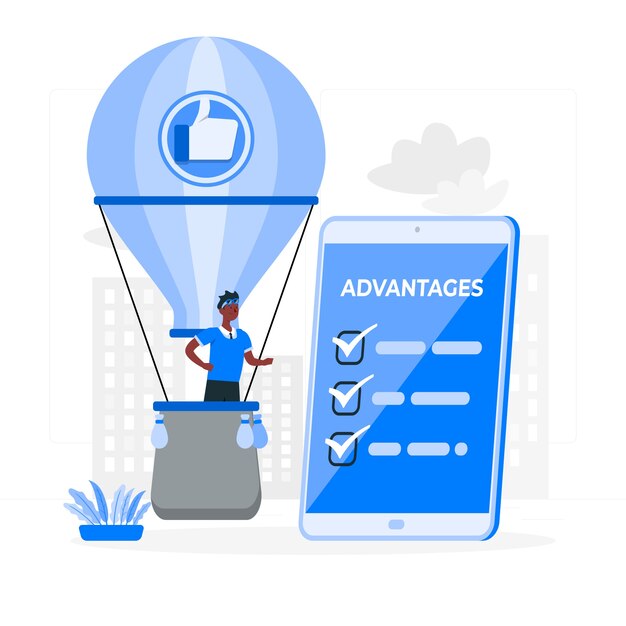
Headless WordPress vs Traditional WordPress
Advantages of a Headless WordPress site
Disadvantages of a Headless WordPress Site
Should you use Headless WordPress?
Headless WordPress is a new approach to building websites that involves separating the content management system (CMS) from the website’s front-end, allowing for greater flexibility and customization.
WordPress is one of the most popular content management systems (CMS) in the world, powering over 40% of the web.
However, as the web has evolved, so has the need for more flexible and powerful ways of using WordPress.
This is where headless WordPress comes in.
What is Headless WordPress?

Headless WordPress is a new way of using WordPress that separates the content management system (CMS) from the front-end display.
In other words, the content is managed by WordPress, but the way it’s displayed is managed by a separate application or website.
Traditionally, WordPress has been used as an all-in-one solution, where the CMS and front-end display are tightly integrated.
However, this can limit the flexibility of the system and make it difficult to integrate with other applications or websites.
With headless WordPress, the CMS is still used to manage the content, but the front-end display is managed by a separate application or website.
This can be anything from a mobile app to a custom website built with a different technology stack.
How does it work?

Headless WordPress works by using the WordPress REST API to expose the content to the front-end application or website.
The REST API is a set of endpoints that allow developers to access and manipulate the content in WordPress from outside the CMS.
This means that developers can build custom front-end applications or websites that consume the content from WordPress via the REST Application programming interface.
They can use any technology they like to build the front-end, whether that’s React, Vue, or plain old HTML, CSS, and JavaScript.
Headless WordPress vs Traditional WordPress

Headless WordPress and traditional WordPress are two distinct approaches to building websites.
Here are some key differences between the two:
1. Front-end development
With traditional WordPress, the front-end and back-end are tightly integrated, and developers use PHP and WordPress templates to build the website’s front-end.
With headless WordPress, the front-end is decoupled from the back-end, and developers can use any front-end framework to build the headless website’s front-end.
2. Customization
Traditional WordPress allows for a high degree of customization using plugins and themes, but customization is often limited by the structure of the WordPress platform.
Headless WordPress offers greater flexibility for customization, as developers can use any front-end framework and build custom APIs to interact with WordPress data.
3. Performance
Because headless WordPress separates the front-end from the back-end, it can result in faster website performance, as the website is no longer reliant on WordPress’s PHP-based templates.
However, it can also require more technical expertise to optimize performance.
4. Security
Traditional WordPress has a reputation for being vulnerable to security threats, especially when using third-party plugins or themes.
Headless WordPress can be more secure, as developers have more control over the website’s security and can build custom security measures as needed.
5. Learning curve
Traditional WordPress is generally considered more accessible to beginners, as it has a user-friendly interface and a large community of users and resources.
Headless WordPress can be more challenging for beginners, as it requires more technical knowledge and expertise to set up and customize.
In summary, headless WordPress offers greater flexibility and performance, while traditional WordPress is easier to use and offers a wider range of pre-built functionality.
The choice between the two will depend on your specific needs and the skills of your development team.
Advantages and Disadvantages of a Headless WordPress Website

Headless WordPress is a relatively new way of using WordPress that separates the CMS from the front-end display.
Instead of relying on WordPress to manage both the back-end and front-end, developers can use WordPress to manage the content and use a separate technology stack to build the front-end.
As with any technology, there are both advantages and disadvantages to using headless WordPress.
In this answer, I will provide a more detailed look at the advantages and disadvantages of headless WordPress sites.
Advantages of a Headless WordPress Site

1. Flexibility
One of the main advantages of headless WordPress is flexibility.
By separating the back-end and front-end, developers can build custom front-end applications that are tailored to their specific needs.
Traditional WordPress themes may not be able to meet the complex requirements of some websites, making headless WordPress particularly useful.
2. Speed
Headless WordPress can be optimized for speed and performance because the front-end is managed separately from WordPress.
Developers can use any technology they like to build the front-end, allowing them to take advantage of the latest performance optimization techniques.
3. Integration
You can integrate Headless WordPress with other applications and services more easily than traditional WordPress.
This can be useful if you need to integrate with other systems, such as a CRM or e-commerce platform.
4. Security
By separating the front-end from the CMS, you can improve the security of your website.
If your front-end application or website is compromised, your CMS and content are still safe.
5. Future-proofing
As the web continues to evolve, headless WordPress provides a flexible and future-proof solution that can adapt to new technologies and trends.
Disadvantages of a Headless WordPress Site

1. Complexity
Headless WordPress is more complex than traditional WordPress because it requires developers to use multiple technologies and APIs.
This can make it more difficult to set up and maintain, particularly for developers who are not familiar with the technology stack.
2. Cost
Building a headless WordPress website can be more expensive than building a traditional WordPress site.
Because developers need to use multiple platforms, technologies and APIs, they may need to spend more time on development and testing.
3. Learning Curve
Learning to build a headless WordPress website requires learning new technologies and APIs.
This can be a steep learning curve for developers who are not familiar with the technology stack.
4. Support
Headless WordPress is a relatively new technology, so there is limited support availabilty from the WordPress community.
This means that developers may need to rely on external resources for help and support.
Should you use Headless WordPress?

Headless WordPress is not for everyone.
If you’re happy with the traditional WordPress approach and don’t need the extra flexibility, then there’s no need to switch to a headless setup.
However, if you’re looking for a more flexible and powerful way of using WordPress, then headless WordPress is definitely worth considering.
It can provide greater control over your front-end display, improve performance and security, and make it easier to integrate with other systems.
How to Make a Headless WordPress Website in 6 Steps

Creating a headless WordPress website involves separating the back-end CMS from the front-end display, which can be built using a separate technology stack.
Here are the steps to create a headless WordPress website in detail:
Step 1: Install WordPress
The first step is to install WordPress on a server or a local development environment.
This involves downloading and installing the latest version of WordPress, configuring the database, and setting up user accounts.
Step 2: Install Required Plugins
Once WordPress is installed, you’ll need to install plugins that allow you to create and manage content for your website.
Some popular plugins for headless WordPress include Advanced Custom Fields, WPGraphQL plugin, and WP REST Application programming interface plugin.
Step 3: Choose a Front-end Framework
| Best Front-end Frameworks | Reviews | Price | Users |
| React | ⭐⭐⭐⭐⭐ | Free | 5.7 million |
| Angular | ⭐⭐⭐⭐⭐ | $129/Year or $399/Forever! | 1.7 million |
| Vue.js | ⭐⭐⭐⭐ | Free | 167,000 |
The next step is to choose a front-end framework or technology stack to build your website’s front-end.
This can include JavaScript frameworks like React, Angular, or Vue.js, or static site generators like Gatsby or Next.js.
The choice of front-end technology will depend on your specific needs and the skills of your development team.
Step 4: Connect WordPress with the Front-end
To connect WordPress with your chosen front-end technology, you’ll need to use the WordPress REST Application Programming Interface(API).
This API allows your front-end application to access and display the content stored in WordPress.
You’ll also need to configure the API to allow for authentication and other security measures.
Step 5: Build the Front-end
Once you’ve connected WordPress to your front-end technology, you can start building the front-end display.
This involves creating templates, components, and pages that display the content from WordPress in the way you want it to appear.
You can also use custom fields and metadata to create more complex displays.
Step 6: Deploy the Website
Once you’ve built your headless WordPress website, you’ll need to deploy it to a server or hosting environment.
This involves uploading your front-end code to a server and configuring it to connect to your WordPress instance.
You may also need to set up additional security measures like SSL certificates or firewalls.
Conclusion

Headless WordPress is a new way of using WordPress that separates the content management system from the front-end display.
It provides greater flexibility, speed, integration, security, and future-proofing than traditional WordPress.
While it’s not for everyone, it’s definitely worth considering if you’re looking for a more flexible and powerful way of using WordPress.
If you liked this article consider reading another about Installing WordPress here.
FAQ
The WordPress REST API allows developers to create custom applications that can interact with a WordPress website’s data and functionality.
By using HTTP requests and standard HTTP methods like GET, POST, PUT, and DELETE, developers can retrieve and manipulate data stored in WordPress using a RESTful API.
This also enables developers the development of customized front-end applications, mobile apps, and other software tools that can interact with WordPress.
WordPress themes are not directly compatible with headless CMS.
In a headless architecture, the CMS provides content through APIs, which can be consumed by any front-end framework or application.
WordPress themes are designed to work with the PHP-based templates of a traditional WordPress installation, where the front-end and back-end are tightly integrated.


